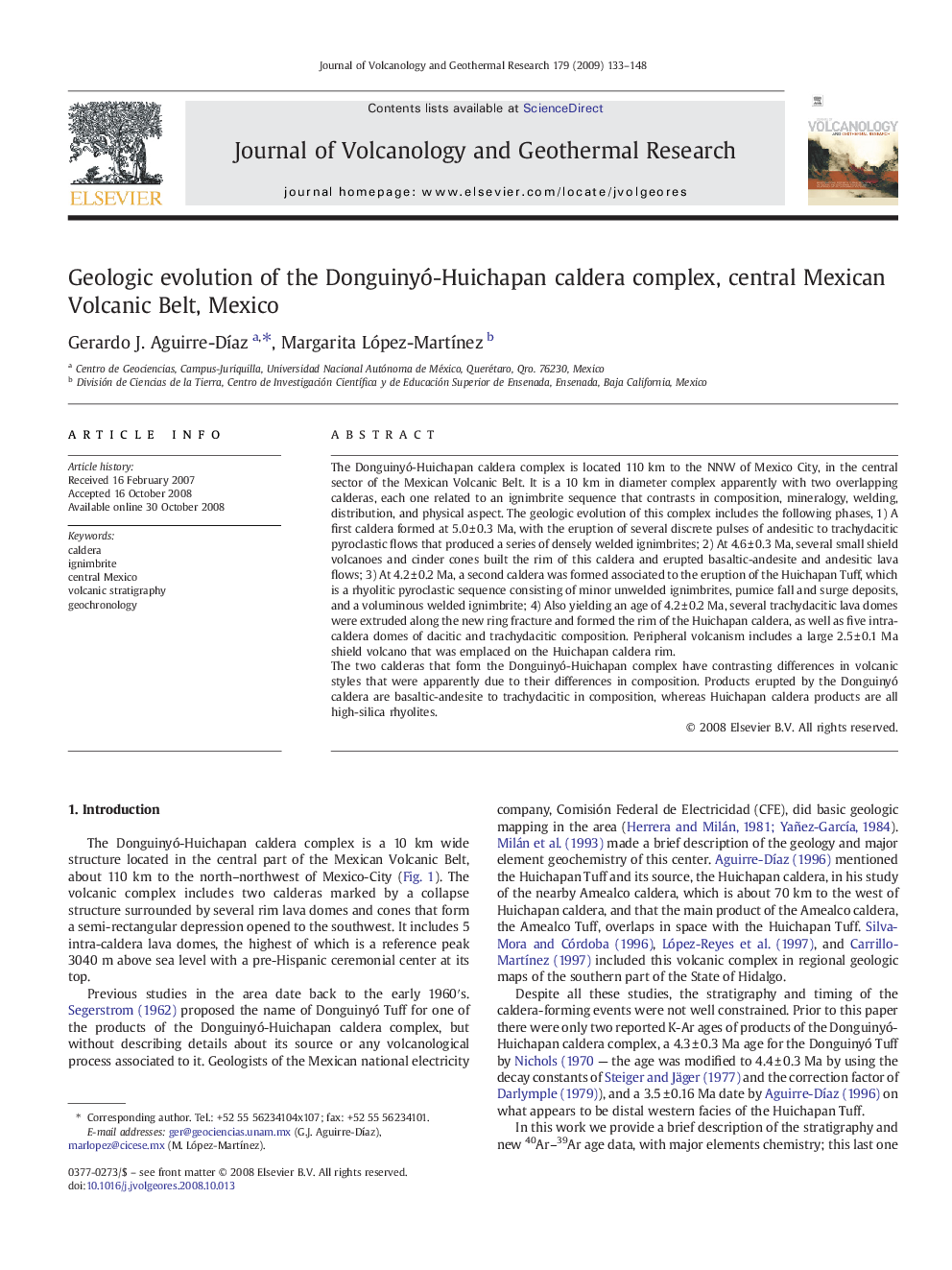| کد مقاله | کد نشریه | سال انتشار | مقاله انگلیسی | نسخه تمام متن |
|---|---|---|---|---|
| 4714509 | 1638444 | 2009 | 16 صفحه PDF | دانلود رایگان |

The Donguinyó-Huichapan caldera complex is located 110 km to the NNW of Mexico City, in the central sector of the Mexican Volcanic Belt. It is a 10 km in diameter complex apparently with two overlapping calderas, each one related to an ignimbrite sequence that contrasts in composition, mineralogy, welding, distribution, and physical aspect. The geologic evolution of this complex includes the following phases, 1) A first caldera formed at 5.0 ± 0.3 Ma, with the eruption of several discrete pulses of andesitic to trachydacitic pyroclastic flows that produced a series of densely welded ignimbrites; 2) At 4.6 ± 0.3 Ma, several small shield volcanoes and cinder cones built the rim of this caldera and erupted basaltic-andesite and andesitic lava flows; 3) At 4.2 ± 0.2 Ma, a second caldera was formed associated to the eruption of the Huichapan Tuff, which is a rhyolitic pyroclastic sequence consisting of minor unwelded ignimbrites, pumice fall and surge deposits, and a voluminous welded ignimbrite; 4) Also yielding an age of 4.2 ± 0.2 Ma, several trachydacitic lava domes were extruded along the new ring fracture and formed the rim of the Huichapan caldera, as well as five intra-caldera domes of dacitic and trachydacitic composition. Peripheral volcanism includes a large 2.5 ± 0.1 Ma shield volcano that was emplaced on the Huichapan caldera rim.The two calderas that form the Donguinyó-Huichapan complex have contrasting differences in volcanic styles that were apparently due to their differences in composition. Products erupted by the Donguinyó caldera are basaltic-andesite to trachydacitic in composition, whereas Huichapan caldera products are all high-silica rhyolites.
Journal: Journal of Volcanology and Geothermal Research - Volume 179, Issues 1–2, 15 January 2009, Pages 133–148